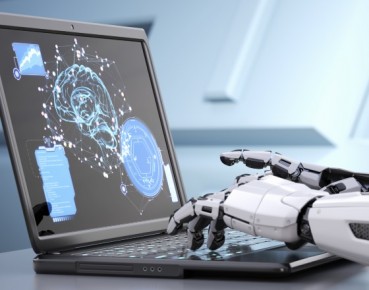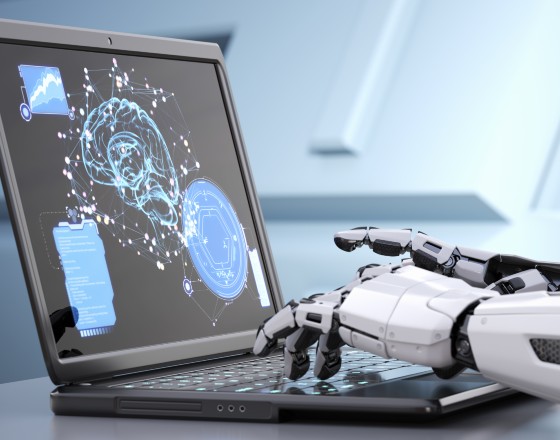
(©Envato)
In a survey of more than 200 organizations conducted by McKinsey, the vast majority of the responding executives claimed that the pandemic would fundamentally change the way they do business over the next five years.
The surveyed managers indicated the changes in their customers’ attitudes and needs as the main factor in the coming transformation — such an opinion was expressed by 85 per cent of respondents. Meanwhile, only one in five believe that they are properly prepared to handle such changes.
At the same time, three-quarters of the surveyed high-level managers also believe that the current crisis will create new opportunities for growth in various industries. However, only a quarter of the respondents — mainly in the pharmaceutical and medical supply sector — saw capturing new growth opportunities as the main priority of their organization.
Crises are the beginnings of changes
Meanwhile, the results of studies presented by Harvard Business Review on the reactions of American public companies to the previous four recessions indicate that during such periods an average of 14 per cent of companies were able to increase their rate of growth and profitability. The key to such outcomes was the adoption of a long-term perspective and focusing on growth factors, and not just on cost-cutting measures. The idea that innovations introduced in the time of a crisis payoff is also confirmed by the analysis of the most innovative companies in the world conducted by BCG.
The companies that made significant investments in innovative projects during the global financial crisis delivered total shareholder returns 4 per cent higher per year than the market average over the period of the subsequent five years.
Looking from the historical perspective, crises of almost all sorts caused economic and social changes, bringing new solutions, ideas, or products. Some historians claim that in the 14th century, the Black Death (that is, the bubonic plague), which killed tens of millions of people in Europe, paved the way for the collapse of feudalism and serfdom, because there were no longer enough people to work in the fields.
Meanwhile, the Great Depression and the subsequent World War II opened up the labor market for women, and brought commercialization of innovations such as jet engines, pressurized passenger cabins, helicopters, nuclear technology, computers, synthetic rubber, nylon, canned beer, radars and many others.
The outbreak of the SARS epidemic in China marked the real beginning of the era of online shopping and was also the source of the success achieved by digital giants such as Alibaba. The 2008 financial crisis accelerated the digitization of financial services thanks to the emergence of aggressive technology companies (fintechs), and was also conducive to the emergence of the so-called sharing economy based on the idea of deriving income from currently unused assets such as homes or vehicles.
Meanwhile, the ongoing climate crisis has already led to the popularization of electric cars and solar panels. The positive effects of disruptions caused by crises were analyzed by renowned economists such as Joseph Schumpeter and Clayton Christensen.
New trends
The key trends that are affecting businesses and the potential for innovation during the current crisis include:
- changes to sales models — according to McKinsey, more than 90 per cent of companies have changed the way they interact with their customers by launching digital access channels, while smaller firms have gained more opportunities to compete with the market leaders;
- digital ways of reaching customers in the case of entities whose sphere of activity and business model previously only assumed direct contact with the clients — digital content streaming from museums, theaters, trade fairs, fashion shows and sports events;
- dynamic changes in customer behavior — transition to remote access channels thanks to previously marginal applications such as Skype or Zoom, which resulted in the emergence of new video-conferencing possibilities in the area of business, telemedicine, education and remote fitness services (provided by companies such as Peloton and Hydrow), as well as the development of social contacts;
- the influx of competitors from different industries — for example, companies such as the automakers GM, Ford, Tesla, and the manufacturer of household appliances Dyson, entered the field of strictly medical products and launched the production of ventilators or components for these devices.
Many of these trends will become permanent, as has previously been the case with online shopping. During the peak of the pandemic in China, the value of purchases in brick and mortar stores decreased by 70 per cent, but after the restrictions were lifted the in-person sales only returned to 50 per cent of the pre-crisis levels. Similar changes can also be seen in other markets and in business processes — as many as 77 per cent of consumers surveyed by Capgemini claimed that after the pandemic ends they would continue to use contactless technologies, such as voice assistants or cashless payments.
From needs to inventions
The current crisis is bringing a lot of ultra-fast innovations emerging through the creative use of already existing technologies and competences.
Thanks to creativity and the circumvention of bureaucratic or corporate barriers, many companies have been able to launch the manufacture of equipment and products, which are in high demand during the pandemic. This applies to a broad array of items, starting from simple disinfectants supplied by well-known brands such as Nivea, L’Oreal and LMVH, through the plastic face shields, whose production was launched by Elon Musk’s space technology company SpaceX, and all the way to the use of shipping containers in mobile hospital care (Hospitainer).
The manufacturers of robots have creatively adapted their technology to the needs of the medical field. As a result, these devices are now being used for the decontamination of hospital premises or the delivery of meals to sick patients. Researchers from the University of Southern Denmark only needed four weeks to design a robot performing swab tests on patients.
Robots can also be used for other purposes associated with virus prevention, e.g. automated room service deliveries in hotels. An artificial intelligence solution, licensed by Amazon, fulfills the same objective by allowing retailers to eliminate store checkouts — the customer’s account is automatically debited after they leave the store. New diagnostic tools were also developed to enable the use of one-minute lung scans in coronavirus testing and diagnosis. According to the report of the World Economic Forum, since April 2020 the number of technological solutions dedicated to the detection, containment and treatment of the virus has increased almost threefold globally.
Thanks to the power of big data analytics, machine learning and AI technologies, pharmaceutical companies have discovered the possibility of using existing drugs for malaria, HIV or multiple sclerosis to fight the coronavirus, significantly shorten the length of patients’ hospitalization, and to reduce the risk of severe infection.
We need to change old habits
Another important issue is also the acquisition and dissemination of knowledge. Thanks to the use of digital crowdsourcing, in which an identified problem is rapidly transmitted to experts in various organizations across the world, we can now quickly obtain many proposed solutions.
Such an approach is applied, among others, by the World Health Organization. The so-called coronathons (named by analogy to the “hackatons” addressed to start-ups), organized on a variety of digital platforms, such as webboost.com, have similar objectives.
The company StartupBlink launched the Coronavirus Innovation Map under the aegis of a United Nations specialized agency. This is a constantly updated digital catalogue of innovations and solutions dedicated to the fight against the coronavirus, which can be used by physicians, scientists, and innovators, but also regular citizens seeking to learn more about the possible means of protection against infection.
The ability to generate innovation and new solutions during the crisis is the result of a certain relaxation of the companies’ modes of operation. This is happening, because the procedures, habits and attitudes towards risk applied thus far are becoming useless.
These changes apply to purchasing departments, inventory and supply chain management, as well as research units. The swiftness of the response to changes has become the most important imperative. This encourages experimentation and accelerated learning, even at the price of possible failure.
Some companies undertake activities that would be difficult to imagine in a stable market situation when changes occur at a slower rate. One such phenomena is the voluntary cooperation of competing pharmaceutical companies — 15 large enterprises have opened their data collections, thereby allowing others to save time and other expenses associated with the introduction of antiviral drugs and vaccines. Meanwhile, according to analysts’ estimates, 97 per cent of tested vaccines will never be approved or commercialized.
Over the long run, the new market and social needs arising during the crisis will turn into permanent innovations, and they are not limited to the field of medicine. They will also be the result of the forced, rapidly progressing digitization of the economy and society. But we will only be able to verify them in a few years’ time.
An important role will be played by the financing of innovation, because one common consequence of crises is the disruption and reduction in access to capital. The analysis carried out by the Bank for International Settlements confirms that this phenomenon lowers the level of expenditures on research and development, and significantly reduces the number of patent applications in the period reaching up to several years after a crisis. This means that also in this aspect we cannot overestimate the importance of maintaining financial sector stability.

